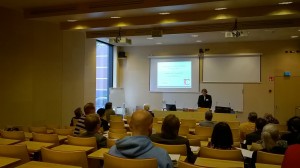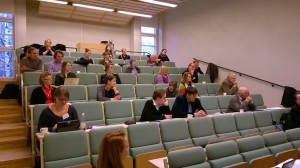The 500th anniversary of the Lutheran Reformation is approaching. The anniversary is the most important project of TUCEMEMS and we have been planning various events, publications and seminars since 2014. Last autumn we organized two international seminars, both of which concerned the history of reformation from different angles.
The Languages in the Lutheran Reformation -seminar, organized on 23.-24. October 2015, concerned the role of languages in the Reformation. Martin Luther and other reformers valued the importance of vernacular language very high, and started a boom of Bible translations. Luther himself translated the Bible into German, and was followed by multiple reformers in different languages.
While there is already a considerable amount of research that has been done on the influence of Reformation on the evolution of vernacular languages, this seminar had a novel approach to the question, as it did not focus solely on one or two languages, but explored 13 different languages. The idea was to bring new light on the linguistic contacts between those languages during the Reformation period and to map the circulation of ideas and linguistic influences across the continent.
During the seminar, we had the pleasure of hearing twelve very interesting presentations. The abstracts of the presentation can be found on the webpage of TUCEMEMS and the presentations will be published as articles in a book next year.
The Long Nordic Reformation -seminar, organized on 8.-9. December 2015, was about the history of Reformation in the Nordic countries. The Reformation spread quite fast from Germany to the Nordic Countries, but its consequences and pace were not always the same as in the central Europe. The key idea of the seminar was to broaden the timeline of the Reformation and to examine it as a long and not always linear series of events.
The first session of the seminar presented a concise overview on how the Reformation was conducted in the Nordic Countries. The second session, then, shed new light on a topic not much discussed in the traditional historiography of Finland, namely the counter-reformatory ideas that spread also in Scandinavia during the sixteenth and seventeenth centuries.
The next day was devoted to two more specific aspects of the Nordic Reformations. First, the third session of the seminar concerned the pictures and images of saints. In the Nordic Countries, there is no surviving account of iconoclasm as in Germany for example, but the way people handled the images of saints was transformed with the Reformation. The last session examined the role of Monasteries in the Reformation.
The seminar was a success and attracted quite many listeners. We hope that we will be able to organize a similar seminar again this year.
Miika Norro


